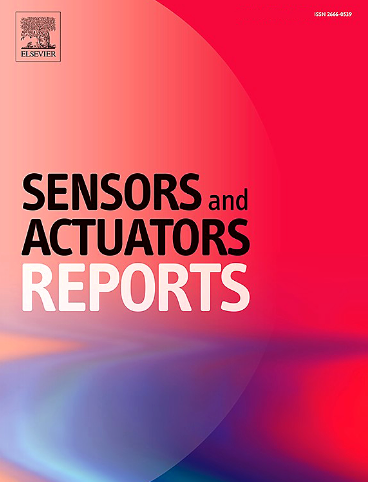Integrated microphotonic platform for highly sensitive virus detection
IF 7.6
Q1 BIOTECHNOLOGY & APPLIED MICROBIOLOGY
引用次数: 0
Abstract
Chip-scale micro-photonic biosensors have matured significantly over the past two decades, with various platforms developed for detecting biomarkers, including proteins in biological fluids. The COVID-19 pandemic has further accelerated research in virus detection, leading to the development of resonant and interferometric biosensors for identifying viruses like SARS-CoV-2. Despite these advancements, there remains a need for technical solutions that ensure point-of-care features such as low cost, rapid response, and low limit-of-detection (LoD). This paper presents an integrated silicon nitride microphotonic platform based on ring resonator technology, specifically designed for highly sensitive virus detection. The sensors, fabricated using strip and slot waveguides, are tested under flow conditions using ethanol and BSA-antiBSA solutions to evaluate bulk and surface sensitivity. The results indicate that the slot waveguide-based ring resonators exhibit the highest sensitivity. The platform uses functionalization protocols to immobilize specific antibodies for detecting SARS-CoV-2. The sensor successfully identifies the target analyte at concentrations as low as 1.5 nM, with a LoD of 36 pM using in situ functionalization, underscoring the importance of antibody orientation through an intermediate protein A layer. These results demonstrate the platform’s potential for rapid and sensitive virus diagnosis and represent a significant step toward the development of portable, point-of-care diagnostic technologies for infectious disease monitoring.

集成微光子平台,用于高灵敏度病毒检测
在过去的二十年里,芯片级微光子生物传感器已经显著成熟,开发了各种平台来检测生物标志物,包括生物液体中的蛋白质。COVID-19大流行进一步加速了病毒检测的研究,导致了用于识别SARS-CoV-2等病毒的共振和干涉生物传感器的发展。尽管取得了这些进步,但仍然需要技术解决方案来确保低成本、快速响应和低检测限(LoD)等即时护理功能。本文提出了一种基于环形谐振器技术的集成氮化硅微光子平台,专门用于高灵敏度的病毒检测。传感器采用条形波导和槽形波导制造,在流动条件下使用乙醇和bsa -anti - bsa溶液进行测试,以评估体积和表面灵敏度。结果表明,基于槽波导的环形谐振器具有最高的灵敏度。该平台采用功能化方案固定特异性抗体,用于检测SARS-CoV-2。该传感器成功识别了低至1.5 nM浓度的目标分析物,利用原位功能化,LoD为36 pM,强调了通过中间蛋白a层定向抗体的重要性。这些结果证明了该平台在快速和敏感的病毒诊断方面的潜力,并代表了开发用于传染病监测的便携式、即时诊断技术的重要一步。
本文章由计算机程序翻译,如有差异,请以英文原文为准。
求助全文
约1分钟内获得全文
求助全文
来源期刊

Sensors and Actuators Reports
Multiple-
CiteScore
9.60
自引率
0.00%
发文量
60
审稿时长
49 days
期刊介绍:
Sensors and Actuators Reports is a peer-reviewed open access journal launched out from the Sensors and Actuators journal family. Sensors and Actuators Reports is dedicated to publishing new and original works in the field of all type of sensors and actuators, including bio-, chemical-, physical-, and nano- sensors and actuators, which demonstrates significant progress beyond the current state of the art. The journal regularly publishes original research papers, reviews, and short communications.
For research papers and short communications, the journal aims to publish the new and original work supported by experimental results and as such purely theoretical works are not accepted.
 求助内容:
求助内容: 应助结果提醒方式:
应助结果提醒方式:


